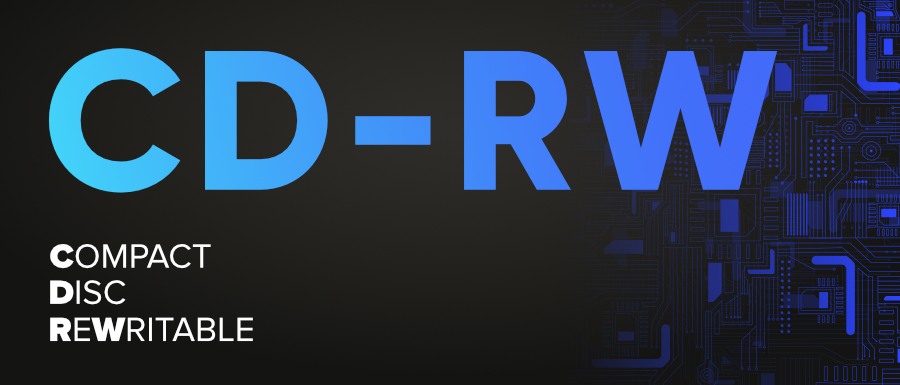CD-RW Full Form
Last Updated :
05 May, 2020
CD-RW stands for (Compact Disc-ReWritable). It is a digital optical disc storage format introduced in 1997. It provided further competition to the various superfloppy alternatives. Ideal use is for test discs, temporary backups, and as a middle-ground between online and offline storage schemes. A CD-RW does not have as great a difference in reflectivity as a pressed CD or a CD-R, and so many earlier CD audio players cannot read CD-RW discs, although most later CD audio players and stand-alone DVD players can. It follows the Orange Book standard.

History
American inventor James T. Russell invented the first system to record digital information on an optical transparent foil that is lit from behind by a high-power halogen lamp. The compact disc is an evolution of LaserDisc technology, where a focused laser beam is used that enables the high information density required for high-quality digital audio signals. In 1979, Sony and Philips set up a joint task force of engineers to design a new digital audio disc. After a year of experimentation and discussion, the Red Book CD-DA standard was published in 1980. The success of the compact disc has been credited to the cooperation between Philips and Sony, which together agreed upon and developed compatible hardware. The unified design of the compact disc allowed consumers to purchase any disc or player from any company and allowed the CD to dominate the at-home music market unchallenged.
Characteristics
- Multi-session format : CD-RW discs have a multi-session format feature capable of adding data during different sessions. Additionally, individual data files and directories may be deleted or updated as needed.
- Phase change technology : it is used to write to the disk. A laser beam is used to heat a certain point of the disk. Once this point is hot, the information stored there can be changed.
- Usable capacities range : Depending on the method used to write, and the type of disk used, usable capacities range from about 500 to 700 megabytes.
- Re-usability : CD-RWs must be erased or blanked before reuse. Erasure methods include full blanking where the entire surface of the disc is erased and fast blanking where only metadata areas, such as PMA, TOC and pre-gap, are cleared.
Advantage
- It can be easily erased and reused.
- When used with packet writing software like Roxio DirectCD or Nero InCD, you can access the CD-RW like any other drive in Windows
- Often plays on DVD players that won’t play CD-R
Disadvantage
- More expensive than CD-R.
- Slower burning speed.
- Many CD players, especially older ones, won’t read CD-RWs.
Share your thoughts in the comments
Please Login to comment...